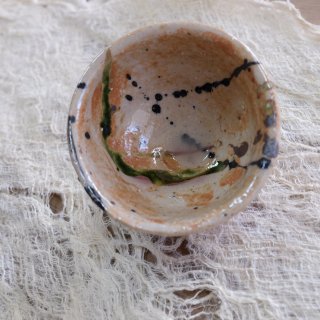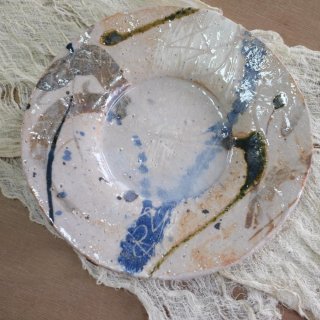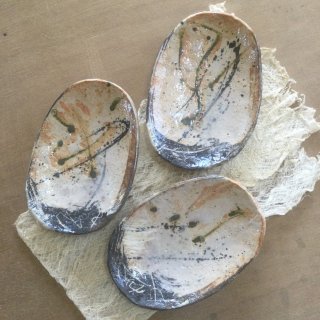ЄЊУЮЄщЄЛ
ЄЄЄФЄтЄЂЄъЄЌЄШЄІЄДЄЖЄЄЄоЄЙЁЃ
ЄДЭзЫОХљЄЌЄДЄЖЄЄЄоЄЗЄПЄщЄЊЬфЙчЄЛЄшЄъЄЊЕЄЗкЄЫЄЊРМЄЌЄБВМЄЕЄЄЁЃ
ЁЁ
ЄЊЄЙЄЙЄсЄЮОІЩЪ
-
 КЬПЇЙѕПЅЩєЅЋЅУЅз
ЙѕПЅЩєЄЮЅЋЅУЅзЄЧЄЙЁЃ ЫмОЦЄИхЁЂОхГЈЄЮОЦРЎЄђЪЃПєВѓЙдЄУЄЦЄоЄЙЁЃ
5,500Бп(ЦтРЧ)
КЬПЇЙѕПЅЩєЅЋЅУЅз
ЙѕПЅЩєЄЮЅЋЅУЅзЄЧЄЙЁЃ ЫмОЦЄИхЁЂОхГЈЄЮОЦРЎЄђЪЃПєВѓЙдЄУЄЦЄоЄЙЁЃ
5,500Бп(ЦтРЧ)
-
 КЬПЇПЅЩєЅЋЅУЅз
КЬПЇЄЮПЅЩєЅЋЅУЅзЄЧЄЙЁЃ ЫмОЦЄИхЄЫОхГЈЄђЪЃПєВѓЙдЄУЄЦЄЄЄоЄЙЁЃ
5,500Бп(ЦтРЧ)
КЬПЇПЅЩєЅЋЅУЅз
КЬПЇЄЮПЅЩєЅЋЅУЅзЄЧЄЙЁЃ ЫмОЦЄИхЄЫОхГЈЄђЪЃПєВѓЙдЄУЄЦЄЄЄоЄЙЁЃ
5,500Бп(ЦтРЧ)
-
 КЬПЇЙгКўЬгЬмЅгЅЂЅоЅА
ЙгКўЬгЬмЄЮКЬПЇЅгЅЂЅоЅАЄЧЄЙЁЃ
6,600Бп(ЦтРЧ)
КЬПЇЙгКўЬгЬмЅгЅЂЅоЅА
ЙгКўЬгЬмЄЮКЬПЇЅгЅЂЅоЅАЄЧЄЙЁЃ
6,600Бп(ЦтРЧ)
-
 КЬПЇПЅЩєЅЋЅУЅз
КЬПЇЅЋЅУЅзЄЧЄЙЁЃ
4,400Бп(ЦтРЧ)
КЬПЇПЅЩєЅЋЅУЅз
КЬПЇЅЋЅУЅзЄЧЄЙЁЃ
4,400Бп(ЦтРЧ)
-
 ЬяМЗХФПЅЩєКЬПЇШ
ЬяМЗХФПЅЩєКЬПЇШЄЧЄЙЁЃ
8,800Бп(ЦтРЧ)
ЬяМЗХФПЅЩєКЬПЇШ
ЬяМЗХФПЅЩєКЬПЇШЄЧЄЙЁЃ
8,800Бп(ЦтРЧ)
-
 КЬПЇЬяМЗХФПЅЩєШ
ЬяМЗХФПЅЩєЄЮШЄЧЄЙЁЃ
5,500Бп(ЦтРЧ)
КЬПЇЬяМЗХФПЅЩєШ
ЬяМЗХФПЅЩєЄЮШЄЧЄЙЁЃ
5,500Бп(ЦтРЧ)
ЁІКюЄъМъЄЫЄФЄЄЄЦ
aknakao-pottery (УцШјОДНЈ)ЄЧЄЙЁЃ
1981ЧЏЄЫТПМЃИЋЄЫУлЭвЄЗЄЦКЃЄЫЛъЄъЄоЄЙЁЃ
ПЅЩєЁІЪДАњЄђУцПДЄЫЁЂХкЄтЄЮЄЮЯТПЉДяЄђКюЄУЄЦЄЄЄоЄЙЁЃ
МЋЭГЄЫЁЂТчЄщЄЋЄЫЁЂЄНЄЗЄЦВПЄшЄъЬЬЧђЄЌЄУЄПМъЛХЛіЄђЄЗЄПЄЄЄШОяЁЙЛзЄУЄЦЄоЄЙЁЃ
ЩсУЪЛШЄЄЄЮДяЄфЮЬЛКЄЮИњЄЋЄЪЄЄЪЊЁЂЄСЄчЄУЄШЭЗЄгЄЮЄЂЄыДяЄт
ЄЄЄэЄЄЄэЄШЅЙЅбЅЄЅЙТЄЗЄЦЄЋЄКЎЄМЄЪЄЌЄщЄфЄУЄЦЄоЄЙЁЃ
ЄНЄѓЄЪЩсУЪЄШЭЗЄгЄЮДяЄђГЇЄЕЄѓЄЫГкЄЗЄѓЄЧЬуЄЈЄПЄЪЄщДђЄЗЄЄЄЧЄЙЁЃ
About the Creator
aknakao-pottery (Akihide Nakao).
I built my kiln in Tajimi in 1981.
I make pottery, mainly Oribe and Kohiki.
I always want to do free, generous, and above all, interesting handwork.
I make dishes for daily use, dishes that cannot be mass-produced, and dishes with a bit of fun while adding various spices and mixing them up.
I would be happy if you could enjoy these everyday and playful potteries.
Ёњ УцШјОДНЈЁЁДєЩьИЉТПМЃИЋЛдКпНЛЁЁsince1981
Ёњ ХИМЈВёЮђЁЁУгТоХьЩ№ЩДВпХЙЁІЄПЄСЕШЕўХдЫмХЙЁІЄПЄСЕШЕЬХИЁІТОТППє
Ёњ ЦўСЊХИЁЁЁЁЦќЫмХСХ§ЙЉЗнХИЁІУцЦќЙёКнЦЋЗнХИЁІФЋЦќЦЋЗнХИЁІХьГЄХСХ§ЙЉЗнХИ
Akihide Nakao
Since1981,works in Tajimi City, Gifu Prefecture.
Exhibition history Ikebukuro Tobu Department Store, Tachikichi Kyoto Main Store, Tachikichi Tachibana Exhibition, and many others
Selected Exhibitions: Japan Traditional Crafts Exhibition, China-Japan International Ceramic Art Exhibition, Asahi Ceramic Art Exhibition, Tokai Traditional Crafts Exhibition
*****************************************************************************************
Ёњ ЅбЅНЅГЅѓЄЮДФЖЄЫЄшЄУЄЦЄІЄФЄяЄЮПЇЁЂЪЗАЯЕЄЄЫАуЄЄЄЌРИЄИЄоЄЙЁЃ
ЫєЄІЄФЄяЄЮЅЕЅЄЅКЄЯЬмАТЄЧЄЙЄЮЄЧЄДЮЛОЕЄЏЄРЄЕЄЄЁЃ
ЁњЁжЯТПЉДяЄЮАЗЄЄЄЫЄФЄЄЄЦЁз
ЛРВНОЦРЎЁЂДдИЕОЦРЎЖІЄЫ1250ЁюЁС1260ЁюЄЧОЦЄЄЄЦЄЊЄъЄоЄЙЁЃ
ЄЗЄЋЄЗХкЄтЄЮЄЮДяЄЯЕлПхРЄЌЙтЄЄЄПЄсЁЂЅГЁМЅвЁМЄфЄЊОпЬ§ЄЪЄЩЄЮПЇСЧЄфЦїЄЄЄтЕлМ§ЄЗЄЦЄЗЄоЄЄЄоЄЙЁЃ
АьШЬХЊЄЫЄЯЛШЄЄЛЯЄсЄЫЄНЄьЄђОЏЄЗЄЧЄтЫЩЄАЄПЄсЁЂЄоЄКЦщЄЫЄІЄФЄяЄђЦўЄьЁЂЪЦЄЮЄШЄЎНСЄђПЛЄЗЄЦЃГЃАЪЌФјМхВаЄЧМбЪЈЄЗЄоЄЙЁЃМбЪЈЄЗЄПДяЄђПЛЄЗЄПЄоЄоМЋСГЄЫЮфЄоЄЗЄПИхЁЂУњЧЋЄЫПхРіЄЄЄђЄЗДяЄђДАСДЄЫДЅСчЄЕЄЛЄоЄЙЁЃ
ЁЪЧђюиЄЯПЅЩє秞ЄЫШцЄйЄЦБјЄьЄЌЬмЮЉЄСАзЄЄЗЙИўЄЫЄЂЄъЄоЄЙЁЃЁЫ
ЄЊЮСЭ§ХљЄђДяЄЫРЙЄъЩеЄБЄыСАЄЫЁЂАьХйПхЄЫПЛЄЗЄЦЄЋЄщЄДЛШЭбЄЫЄЪЄыЄГЄШЄђЄЊДЋЄсЄЄЄПЄЗЄоЄЙЁЃЄГЄІЄЙЄыЄГЄШЄЫЄшЄъЁЂЄЕЄщЄЫДяЄиЄЮПЇСЧЄфЦїЄЄЄЮПЏЦўЄђЫЩЄАЄГЄШЄЌЄЧЄЄоЄЙЁЃ
ТбЧЎЭбЧДХкЄЯЛШЄУЄЦЄоЄЛЄѓЄЮЄЧЁЂФОВаЁІЅЊЁМЅжЅѓЄЮЄДЛШЭбЄЯНаЭшЄоЄЛЄѓЁЃ
ЁњThe color and atmosphere of the dishes may differ depending on the environment of your computer.
Also, please note that the size of the dishes is a rough guide.
ЁњAbout the handling of Japanese tableware
Both oxidative and reduction firing are done at 1250Ёю to 1260Ёю.
However, potteries are highly water absorbent, so they absorb food colours and smells such as coffee and soy sauce.
In order to prevent this from happening, the pot is first filled with rice water and boiled over low heat for about 30 minutes. After the boiling process, the pot is left to cool naturally, then carefully rinsed with water and dried completely.
(White glaze tends to show stains more easily than Oribe glaze.)
It is recommended that you soak the dish in water before placing it on the table. This will further prevent pigments and odors from penetrating the vessel.
Since heat-resistant clay is not used, the dishes cannot be used over an open flame or in an oven. Microwaving is possible except for the overglaze painted pieces. The overglaze painted items cannot be used.
aknakao-pottery (УцШјОДНЈ)ЄЧЄЙЁЃ
1981ЧЏЄЫТПМЃИЋЄЫУлЭвЄЗЄЦКЃЄЫЛъЄъЄоЄЙЁЃ
ПЅЩєЁІЪДАњЄђУцПДЄЫЁЂХкЄтЄЮЄЮЯТПЉДяЄђКюЄУЄЦЄЄЄоЄЙЁЃ
МЋЭГЄЫЁЂТчЄщЄЋЄЫЁЂЄНЄЗЄЦВПЄшЄъЬЬЧђЄЌЄУЄПМъЛХЛіЄђЄЗЄПЄЄЄШОяЁЙЛзЄУЄЦЄоЄЙЁЃ
ЩсУЪЛШЄЄЄЮДяЄфЮЬЛКЄЮИњЄЋЄЪЄЄЪЊЁЂЄСЄчЄУЄШЭЗЄгЄЮЄЂЄыДяЄт
ЄЄЄэЄЄЄэЄШЅЙЅбЅЄЅЙТЄЗЄЦЄЋЄКЎЄМЄЪЄЌЄщЄфЄУЄЦЄоЄЙЁЃ
ЄНЄѓЄЪЩсУЪЄШЭЗЄгЄЮДяЄђГЇЄЕЄѓЄЫГкЄЗЄѓЄЧЬуЄЈЄПЄЪЄщДђЄЗЄЄЄЧЄЙЁЃ
About the Creator
aknakao-pottery (Akihide Nakao).
I built my kiln in Tajimi in 1981.
I make pottery, mainly Oribe and Kohiki.
I always want to do free, generous, and above all, interesting handwork.
I make dishes for daily use, dishes that cannot be mass-produced, and dishes with a bit of fun while adding various spices and mixing them up.
I would be happy if you could enjoy these everyday and playful potteries.
Ёњ УцШјОДНЈЁЁДєЩьИЉТПМЃИЋЛдКпНЛЁЁsince1981
Ёњ ХИМЈВёЮђЁЁУгТоХьЩ№ЩДВпХЙЁІЄПЄСЕШЕўХдЫмХЙЁІЄПЄСЕШЕЬХИЁІТОТППє
Ёњ ЦўСЊХИЁЁЁЁЦќЫмХСХ§ЙЉЗнХИЁІУцЦќЙёКнЦЋЗнХИЁІФЋЦќЦЋЗнХИЁІХьГЄХСХ§ЙЉЗнХИ
Akihide Nakao
Since1981,works in Tajimi City, Gifu Prefecture.
Exhibition history Ikebukuro Tobu Department Store, Tachikichi Kyoto Main Store, Tachikichi Tachibana Exhibition, and many others
Selected Exhibitions: Japan Traditional Crafts Exhibition, China-Japan International Ceramic Art Exhibition, Asahi Ceramic Art Exhibition, Tokai Traditional Crafts Exhibition
*****************************************************************************************
Ёњ ЅбЅНЅГЅѓЄЮДФЖЄЫЄшЄУЄЦЄІЄФЄяЄЮПЇЁЂЪЗАЯЕЄЄЫАуЄЄЄЌРИЄИЄоЄЙЁЃ
ЫєЄІЄФЄяЄЮЅЕЅЄЅКЄЯЬмАТЄЧЄЙЄЮЄЧЄДЮЛОЕЄЏЄРЄЕЄЄЁЃ
ЁњЁжЯТПЉДяЄЮАЗЄЄЄЫЄФЄЄЄЦЁз
ЛРВНОЦРЎЁЂДдИЕОЦРЎЖІЄЫ1250ЁюЁС1260ЁюЄЧОЦЄЄЄЦЄЊЄъЄоЄЙЁЃ
ЄЗЄЋЄЗХкЄтЄЮЄЮДяЄЯЕлПхРЄЌЙтЄЄЄПЄсЁЂЅГЁМЅвЁМЄфЄЊОпЬ§ЄЪЄЩЄЮПЇСЧЄфЦїЄЄЄтЕлМ§ЄЗЄЦЄЗЄоЄЄЄоЄЙЁЃ
АьШЬХЊЄЫЄЯЛШЄЄЛЯЄсЄЫЄНЄьЄђОЏЄЗЄЧЄтЫЩЄАЄПЄсЁЂЄоЄКЦщЄЫЄІЄФЄяЄђЦўЄьЁЂЪЦЄЮЄШЄЎНСЄђПЛЄЗЄЦЃГЃАЪЌФјМхВаЄЧМбЪЈЄЗЄоЄЙЁЃМбЪЈЄЗЄПДяЄђПЛЄЗЄПЄоЄоМЋСГЄЫЮфЄоЄЗЄПИхЁЂУњЧЋЄЫПхРіЄЄЄђЄЗДяЄђДАСДЄЫДЅСчЄЕЄЛЄоЄЙЁЃ
ЁЪЧђюиЄЯПЅЩє秞ЄЫШцЄйЄЦБјЄьЄЌЬмЮЉЄСАзЄЄЗЙИўЄЫЄЂЄъЄоЄЙЁЃЁЫ
ЄЊЮСЭ§ХљЄђДяЄЫРЙЄъЩеЄБЄыСАЄЫЁЂАьХйПхЄЫПЛЄЗЄЦЄЋЄщЄДЛШЭбЄЫЄЪЄыЄГЄШЄђЄЊДЋЄсЄЄЄПЄЗЄоЄЙЁЃЄГЄІЄЙЄыЄГЄШЄЫЄшЄъЁЂЄЕЄщЄЫДяЄиЄЮПЇСЧЄфЦїЄЄЄЮПЏЦўЄђЫЩЄАЄГЄШЄЌЄЧЄЄоЄЙЁЃ
ТбЧЎЭбЧДХкЄЯЛШЄУЄЦЄоЄЛЄѓЄЮЄЧЁЂФОВаЁІЅЊЁМЅжЅѓЄЮЄДЛШЭбЄЯНаЭшЄоЄЛЄѓЁЃ
ЁњThe color and atmosphere of the dishes may differ depending on the environment of your computer.
Also, please note that the size of the dishes is a rough guide.
ЁњAbout the handling of Japanese tableware
Both oxidative and reduction firing are done at 1250Ёю to 1260Ёю.
However, potteries are highly water absorbent, so they absorb food colours and smells such as coffee and soy sauce.
In order to prevent this from happening, the pot is first filled with rice water and boiled over low heat for about 30 minutes. After the boiling process, the pot is left to cool naturally, then carefully rinsed with water and dried completely.
(White glaze tends to show stains more easily than Oribe glaze.)
It is recommended that you soak the dish in water before placing it on the table. This will further prevent pigments and odors from penetrating the vessel.
Since heat-resistant clay is not used, the dishes cannot be used over an open flame or in an oven. Microwaving is possible except for the overglaze painted pieces. The overglaze painted items cannot be used.





































](https://img21.shop-pro.jp/PA01483/643/product/172982088_th.jpg?cmsp_timestamp=20230209120612)
](https://img21.shop-pro.jp/PA01483/643/product/172991963_th.jpg?cmsp_timestamp=20230209144602)



















